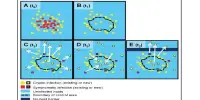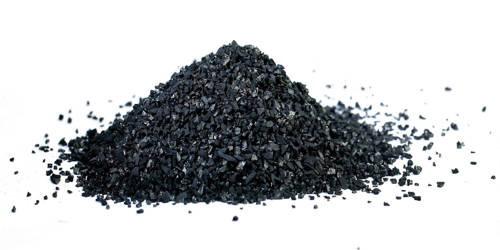According to a new study published in Seismological Research Letters, seismic and acoustic data collected 50 meters away from a research nuclear reactor could predict whether the reactor was on or off with 98 percent accuracy.
Researchers at Oak Ridge National Laboratory were able to forecast when the reactor will turn on and off and estimate its power levels with 66 percent accuracy by using numerous machine learning models on the data.
According to the study’s lead author Chengping Chai, a geophysicist at Oak Ridge, the discoveries provide another tool for the international community to cooperate verify and monitor nuclear reactor operations in a least invasive manner.
Nuclear reactors can be utilized for both good and bad purposes. As a result, the nuclear nonproliferation community is interested in ensuring that a nuclear reactor is working as intended.
The release of energy from splitting the atoms of particular elements is produced and controlled by a nuclear reactor. The energy released in a nuclear power reactor is used as heat to create steam, which is then used to generate electricity.
Although seismic and acoustic data has long been used to track earthquakes and the structural qualities of infrastructure like buildings and bridges, some researchers are also using it to study the movements related with industrial processes.
The seismo-acoustic signals associated with different power levels show complicated patterns that are difficult to analyze with traditional techniques. The machine learning approaches are able to infer the complex relationship between different reactor systems and their seismo-acoustic fingerprint and use it to predict power levels.
Chengping Chai
Chai and colleagues employed seismic and acoustic sensors to monitor the High Flux Isotope Reactor at Oak Ridge, which produces neutrons for study in physics, chemistry, biology, engineering, and materials science. The reactor’s power status is determined by a thermal process using a heat-dissipating cooling tower.
“We found that seismo-acoustic sensors can record the mechanical signatures of vibrating equipment such as fans and pumps at the cooling tower at an accuracy enough to shed light into operational questions,” Chai said.
The researchers then examined a variety of machine learning methods to see which one was the most effective at estimating the reactor’s power state from specific seismo-acoustic data. Over the course of a year, the algorithms were trained using seismic-only, acoustic-only, and combined types of data. They discovered that combining data generated the greatest outcomes.
“The seismo-acoustic signals associated with different power levels show complicated patterns that are difficult to analyze with traditional techniques,” Chai explained. “The machine learning approaches are able to infer the complex relationship between different reactor systems and their seismo-acoustic fingerprint and use it to predict power levels.”
For most types of reactors, the principles for harnessing nuclear power to generate electricity are the same. The energy released by the ongoing fission of the fuel’s atoms is captured as heat in a gas or water and used to generate steam. Steam is used to power the turbines that generate electricity (as in most fossil fuel plants).
During the course of their research, Chai and colleagues discovered some intriguing indications, like the vibrations of a noisy pump in the reactor’s off state, which vanished after the pump was replaced.
Associating seismic and acoustic signatures with various industrial activities and equipment, according to Chai, is a long-term and difficult task. According to preliminary study on the High Flux Isotope Reactor, fans and pumps have distinctive seismo-acoustic fingerprints, and different fan speeds have their own distinct signatures.
“Some normal but less frequent activities such as yearly or incidental maintenance need to be distinguished in seismic and acoustic data,” Chai said. To better understand how these signatures relate to specific operations, “we need to study both the seismic and acoustic signatures of instruments and the background noise at various industrial facilities.”
















